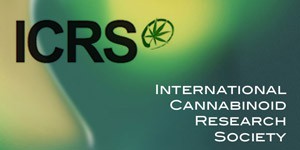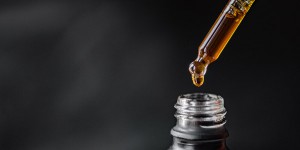By José Carlos Bouso

José Carlos Bouso is a clinical psychologist and a doctor of pharmacology. His areas of interest are psychopharmacology and the therapeutic properties of entactogens, psychedelics and cannabis. He has conducted therapeutic research with MDMA, pharmacological research with several substances of plant and synthetic origin and has also performed studies on the long-term neuropsychological effects of substances such as cannabis, ayahuasca and cocaine. He is author of the book "Qué son las drogas de síntesis" [What are synthetic drugs?], and co-author of “¿La marihuana como medicamento? Los usos médicos y terapéuticos del cannabis y los cannabinoides" [Marihuana as medicine? The medical and therapeutic uses of cannabis and cannabinoids] and "Ayahuasca y salud" [Ayahuasca and health]. His research has been published in scientific journals. He is currently the director of scientific projects at Fundación ICEERS.
The cost of substance abuse in the US, including health expenses, judicial costs and the cost of productivity loss, is estimated at over 700 billion dollars a year for illicit drugs, alcohol and tobacco.1 Although, as we have mentioned, drug abuse is considered as a disease of the brain, not a single pharmaceutical has yet to be found that cures this disease. Recovery rates stand at around 10%. Why then might cannabis be useful for treating substance addiction, especially given that cannabis itself is considered as a drug of abuse?
Cannabis in the treatment of drug addiction
Before addressing this issue directly, it is important to remember that there may be aspects related to substance abuse that lie outside the field of pharmacology. Although we previously gave some psychological and contextual reasons, perhaps one of the factors that can best explain the problem of drugs is that of the policies established in relation to them. How else can one explain the fact that consumption varies from country to country? Why there is so much of a gender difference in the prevalence of cannabis consumption in particular and other drugs in general? Is it not possible that there may be mechanisms at play in drug consumption and addiction that have little or nothing to do with the active principles of the substances themselves? One recent study found that between 2002 and 2013 the prevalence of cannabis-associated disorders among adolescents fell in those US states that have legalised cannabis for therapeutic purposes.1 Recent epidemiological studies conclude that more than 80% of drug addicts eventually overcome their addiction,2 contradicting the dogma that this is a chronic and recurrent disease. To give one final example, in the United Kingdom, diagnoses of cannabis-related psychosis and hospital admissions for this cause fell in the period from 2003 to 2006 – the years in which cannabis was on a less restrictive list of controlled substances.3
Therefore, before addressing the possible role of cannabis in treating drug dependence, we need to be very aware of the factors outlined above. We should not expect either cannabis or any other pharmaceutical to have some miraculous effectiveness. Firstly, because miracle cures do not exist in medicine. And secondly, because if we are defending the idea that drug addiction is not a disease, but something else, then we should not expect to be able to treat it solely with pharmaceuticals. Having said this, we shall now examine the evidence, which may be divided into three types: preclinical research (with animal models), observational studies and controlled clinical trials.
Animal research
With ever greater consistency, preclinical research (with animals) is showing the important role played by the endocannabinoid system in modulating addictive behaviours.1 We shall not enter into a discussion on the preclinical research here. Interested readers will find references on the subject in the bibliography. We would only note that, to give a pair of examples, inhibition of FAAH, the enzyme that breaks down anandamide,2 and CB2 receptors,3 have been shown to be possible therapeutic targets. Among the different cannabinoids, CBD has displayed interesting results in animal research4 and, as we shall see below, it has already shown interesting results in the prevention of relapses in opiate dependence.5
Ethnographic and observational studies
Another two studies monitored crack addicts who decided to kick the habit by taking marihuana. The first was conducted in Sao Paulo, Brazil, by an ambulatory health service for addicts wanting to quit the habit. Of those seeking help to give up crack, a sub-sample of 25 subjects was selected who said they were self-medicating with marihuana to combat cravings and who were not provided with any other type of pharmacological treatment. They were interviewed weekly for nine months to assess the progress of their dishabituation. Four subjects (16%) abandoned the programme during the first three months; another 4 were incapable of giving up, and despite consuming cannabis, continued to take crack on a regular basis throughout the nine months of monitoring. However, 17 of the 25 subjects (68%) did abandon crack consumption and said that the use of cannabis reduced their cravings and had positive subjective effects and specific changes in their behaviour that helped them overcome their addiction. The average time taken by the subjects to stop consuming crack was 5.2 weeks.1
The other study of this type was conducted in Jamaica with working-class women, many of them prostitutes, with an addiction to crack. In this ethnographic study, 33 women were monitored for nine months (half of them were addicted to crack and the other half were ex-addicts) during which time their drug consumption, lifestyles and their personal and social relations were recorded. Female crack users are especially stigmatised in Jamaica by the Rastafarian culture, and this stigma is further increased in the case of prostitutes, despite the fact that the majority of these women have been initiated into crack use by men. Women working in the tourism industry are at especially high risk, since the traffickers use them to supply crack to tourists. The study found that when the addicts decided to use marihuana (ganja) their quality of life began to improve: they slept and ate better, took more care of their physical appearance (considered very important in Rastafarian culture) and spent more time on their children; moreover, of the 14 women who succeeded in discontinuing crack use in the 9-month period, 13 attributed their success to the use of ganja. Marihuana enabled these women to have a better quality of life and to gradually get off crack, while being reincorporated into Rastafarian culture thanks to their marihuana consumption. According to the author of the report, marihuana, rather than serving as a gateway to harder drugs, had proved to be an exit door.1
These first anecdotal evidence of the potential use of cannabis as a substitute for more dangerous licit and illicit drugs, is beginning to be seen in places where cannabis has been legalized for medicinal purposes, including studies on patients attending dispensaries in the US1 and Canada2. Perhaps the most interesting of these studies are those that show that cannabis can reduce opiate use among patients suffering chronic pain.3 Because opiates induce tolerance, patients need to gradually increase their dose, thus increasing the risk of an overdose. Consumption of pharmacy opiates is reaching epidemic proportions in the US, both among patients with chronic pain and those who take it without medical prescription, and it has now become the country’s leading cause of accidental death.4 Cannabis has been shown to operate synergically with opiates, with the combination allowing patients to reduce their doses of opiates to achieve the optimal analgesic effect.5 This possibility of using cannabis to reduce the dose of opiates is not only important for patients suffering chronic pain, but also in terms of its implications for reducing mortality due to overdose. One recently published epidemiological study found that deaths from overdose fell from 1999 in US states in which medicinal cannabis has been legalised.6 Another recent study found a statistically significant relationship between recent cannabis use and a lower frequency of non-medical use of opiates among intravenous opiate users.7
Clinical trials
Unfortunately, despite overwhelming preclinical and anecdotal evidence from observational studies, no clinical trials have been conducted to test hypotheses on the anti-addictive potential of cannabis and/or cannabinoids. Indeed, one recent article questions whether there is sufficient evidence to consider cannabis as a substitute treatment for alcohol.1 The same could be said for other drugs. Nonetheless, the fact is that in the practical area, authorisation for therapeutic cannabis in many American states has led to such widespread consumption that there are even some rehab clinics that allow patients to use cannabis. One study found better results for indicators such as termination of treatment, medical problems and problems with the law among patients who were allowed to consume marihuana while coming off other drugs.2 Another study found a greater rate of adhesion to treatment in patients with a dual pathology (attention deficit disorder and cocaine dependency) among patients who took marihuana during the treatment process.3 For this reason, there have been calls from the scientific community to bridge this gap between preclinical and observational evidence and hard evidence from clinical trials.4 A study by Dr Raquel Peyraube and myself has received authorisation from the Ethics Committee of the Hospital de Clínicas in Montevideo, Uruguay, and is now awaiting approval from the Ministry of Health. If approved, the study would go some way to answering these calls from specialists to the scientific community.
Why might cannabis be a potential treatment for drug dependence?
As a reward for the patient reader, we have left to the end what may be the most interesting study conducted to date. This is a placebo-controlled clinical study, assessing the potential of CBD to reduce craving among opiate users. Based on evidence in animal research showing that CBD reduces cravings for different substances, the authors first designed a controlled study in which they co-administered CBD and fentanyl (a powerful synthetic opiate) in the laboratory to healthy volunteers, in order to assess the safety of its co-administration, before proceeding to administer CBD to dependent patients. Having confirmed that the treatment was safe, a group of opiate dependents was selected who had been off the drug for 7 days. Half of them were administered CBD (10-15 mg/kg) for three consecutive days and the other half were given a placebo. Seven days after start of treatment they underwent a series of laboratory tests in which they were shown images related to heroin consumption, in other words, the contextual keys of inducement to consumption were created in the laboratory. There was a dramatic and statistically significant reduction in measurements of craving and anxiety on presentation of the stimuli among subjects who had received CBD. After seven days too, craving rates were generally significantly lower amongst subjects treated with CBD.1
What is interesting about these results is that they show that craving can be effectively reduced by a pharmaceutical that does not act by counteracting the pharmacological effects of the substance on which the patients are dependent, but instead on the basis set out in this article (and widely accepted today in the scientific community): that the problem of addiction is related to the anticipation of reward rather than the enjoyment of the reward in itself. CBD has proved effective in this pilot study, as well as in preclinical research, in breaking the game of contingencies between the appearance of contextual stimuli that incite the organism to pursue a reward and the search for the reward itself. CBD appears to tone down the effect of the contextual keys by reducing their attentional prominence, or to put it in lay terms: by reducing their power to attract the individual's attention, displacing the pressure to obtain the reward. If this level of effectiveness is confirmed by future clinical trials, such a treatment would finally challenge the mistaken notion of addiction as a disease and would confirm that its effect is on behaviour, not on some brain disease that requires symptomatic pharmacological treatment. If this is the case, CBD does not act on possible symptoms of a possible disease, but on the causes for keeping up a behavioural habit.
Might the same be true of other cannabinoids? And cannabis? There is wide evidence from studies on conditioning which have used THC, or activated the CB1 receptors, or used transgenic mice lacking the CB1 receptor, showing the role of the endocannabinoid system in general, and CB1 receptors in particular, in modulating the behaviour of research animals to different types of contextual key.1 Perhaps the field in which most research has been conducted is in fear conditioning models, where animals are trained to do something when they receive cues from their environment that they are about to receive an electric shock (for example, they receive a shock every time a red light is lit up). The CB1 receptors are of key importance in deconditioning the conditioned animals. It is therefore not unreasonable to think that cannabis, given its CBD content and its action on the CB1 receptors, might play an important role in deconditioning substance addicts. Replacing one substance for another may not be the optimal treatment, although there is sometimes no alternative (as is often the case with methadone substitute treatments). In any case, cannabis is a physiologically very safe substance which is incapable of causing death or physiological injury from overdose. Not everyone tolerates the psychological effects of cannabis well and this will not be the best treatment for all patients. However, for those who can benefit from it, there are plenty of solid health reasons in favour of taking cannabis as against more toxic drugs such as alcohol, cocaine or opiates.
1. https://www.drugabuse.gov/related-topics/trends-statistics
2. Bachhuber MA, Saloner B, Cunningham CO, Barry CL. 2014. Medical cannabis laws and opioid analgesic overdose mortality in the United States, 1999-2010.JAMA Intern Med. 174(10):1668-73.
3. See Note 3.
4. Braakmann N, Jones S. 2014. Cannabis depenalisation, drug consumption and crime – evidence from the 2004 cannabis declassification in the UK. Social Science & Medicine. 115:29e37.
5. Olière S, Joliette-Riopel A, Potvin S, Jutras-Aswad D.Front Psychiatry. 2013. Modulation of the endocannabinoid system: vulnerability factor and new treatment target for stimulant addiction. 4:109.
6. Panlilio LV, Justinova Z, Goldberg SR.Pharmacol Ther. 2013. Inhibition of FAAH and activation of PPAR: new approaches to the treatment of cognitive dysfunction and drug addiction. 138(1):84-102.
7. Xi ZX, Peng XQ, Li X, Song R, Zhang HY, Liu QR, Yang HJ, Bi GH, Li J, Gardner EL.Nat Neurosci. 2011. Brain cannabinoid CB₂ receptors modulate cocaine's actions in mice. 14(9):1160-6.
8. Prud'homme M, Cata R, Jutras-Aswad D. 2015. Cannabidiol as an Intervention for Addictive Behaviors: A Systematic Review of the Evidence. Subst Abuse. 9:33-8.
9. Hurd YL, Yoon M, Manini AF, Hernandez S, Olmedo R, Ostman M, Jutras-Aswad D.Neurotherapeutics. 2015. Early Phase in the Development of Cannabidiol as a Treatment for Addiction: Opioid Relapse Takes Initial Center Stage. 12(4):807-15.
10. Labigalini E Jr, Rodrigues LR, Da Silveira DX. 1999. Therapeutic use of cannabis by crack addicts in Brazil. J Psychoactive Drugs. 31(4):451-5.
11. Dreher M. 2002. Crack Heads and Roots Daughters: The Therapeutic Use of Cannabis in Jamaica Journal of Cannabis Therapeutics. 2(3-4): 121-33.
12. Amanda R. 2009. Cannabis as a substitute for alcohol and other drugs. Harm Reduct J. 2009; 6: 35.
13. Lucas P, Reiman A, Earleywine M, McGowan SK, Oleson M, Coward MP, Thomas B. 2013. Cannabis as a substitute for alcohol and other drugs: A dispensary-based survey of substitution effect in Canadian medical cannabis patients. Addiction Research and Theory. 21(5): 435–442.
14. Lucas P. 2012. Cannabis as an adjunct to or substitute for opiates in the treatment of chronic pain. J Psychoactive Drugs. 44(2):125-33.
15. http://www.elconfidencial.com/mundo/2016-03-30/heroina-opiaceos-eeuu-obama-drogas_1175899/
16. Gerak LR, France CP. 2016. Combined Treatment with Morphine and Δ9-Tetrahydrocannabinol in Rhesus Monkeys: Antinociceptive Tolerance and Withdrawal. J Pharmacol Exp Ther. May;357(2):357-66.
17. Bachhuber MA, Saloner B, Cunningham CO, Barry CL. 2014. Medical cannabis laws and opioid analgesic overdose mortality in the United States, 1999-2010. JAMA Intern Med. 174(10):1668-73.
18. Kral AH, Wenger L, Novak SP, Chu D, Corsi KF, Coffa D, Shapiro B, Bluthenthal RN. 2015. Is cannabis use associated with less opioid use among people who inject drugs? Drug Alcohol Depend. 153:236-41.
19. Subbaraman MS. 2014. Can cannabis be considered a substitute medication for alcohol? Alcohol Alcohol. 49(3):292-8.
20. Swartz R. Medical marijuana users in substance abuse treatment 2010. Harm Reduct J. 2010; 7: 3.
21. Aharonovich E1, Garawi F, Bisaga A, Brooks D, Raby WN, Rubin E, Nunes EV, Levin FR. 2006. Concurrent cannabis use during treatment for comorbid ADHD and cocaine dependence: effects on outcome. Am J Drug Alcohol Abuse. 32(4):629-35.
22. Fischer B, Kuganesan S, Gallassi A, Malcher-Lopes R, van den Brink W, Wood E. 2015. Addressing the stimulant treatment gap: A call to investigate the therapeutic benefits potential of cannabinoids for crack-cocaine use. Int J Drug Policy. 26(12):1177-82.
23. Hurd YL, Yoon M, Manini AF, Hernandez S, Olmedo R, Ostman M, Jutras-Aswad D. 2015. Early Phase in the Development of Cannabidiol as a Treatment for Addiction: Opioid Relapse Takes Initial Center Stage. Neurotherapeutics. 12(4):807-15.
24. Moreira FA, Lutz B. 2008. The endocannabinoid system: emotion, learning and addiction. Addict Biol. 13(2):196-212.


